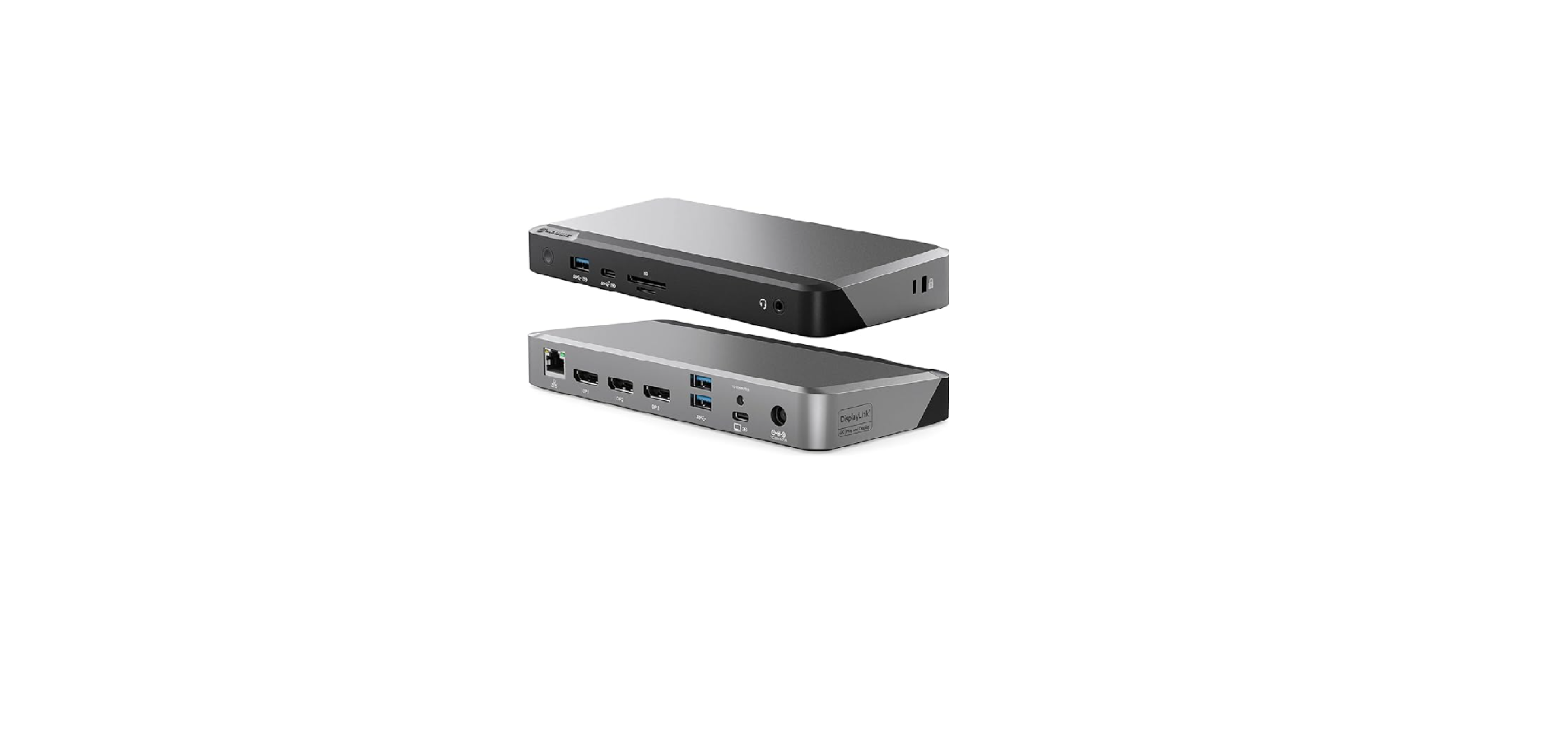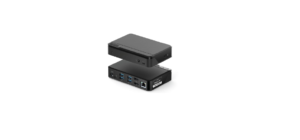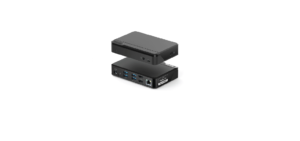Alogic DUCMA3 Triple Display Docking Station User Manual
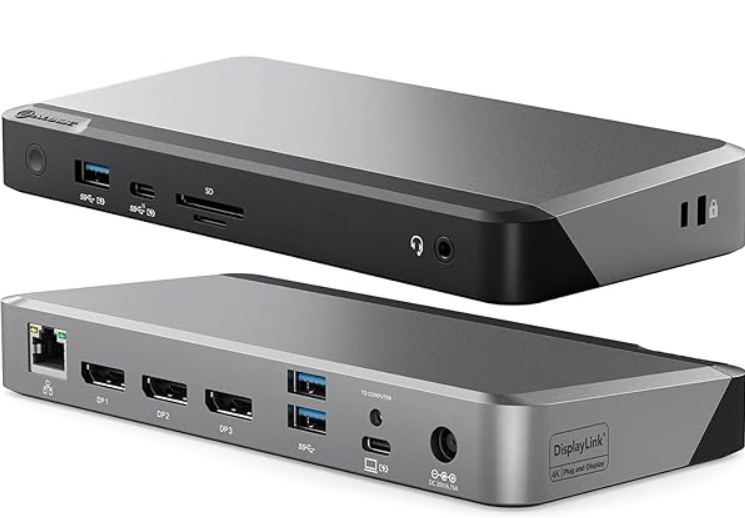
Specifications
Model DUCMA3
Input 1 x USB-C Output 2 x DisplayPort, 1 x HDMI, 2 x USB-C 3.1 Gen 2 (10G) BC 1.2 and Apple Charging Support, 2 x USB-A 3.1 Gen1 (5G), 2 x USB-A 2.0, 1 x Audio / Microphone Jack, 1 x RJ45 Ethernet 1Gbps, 1 x SD Card Resolution Up to 2 x 4K UHD 60Hz or 3 x 4K UHD 30Hz with DP 1.4 HBR3 with DSC enabled host* *See resolution support tables below for maximum outputs Warranty 2 Years
Package Contents
- 1 x Dock
- 1 x 170W AC Power Adapter
- 1 x US; 1 x UK; 1 x EU; 1 x AU Power Cord
- 1 x User Manual
User Instructions
Powering the Dock: The dock comes included with power cords for US, UK, EU and AU-NZ. Connect the suitable power cord (as per your region) to the included power adapter. Connect the barrel end of the power adapter to the dock and the plug end of the cable to an available power socket.
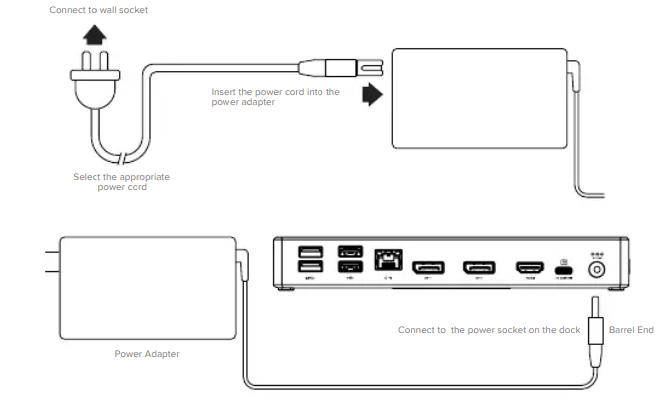
Connecting the Dock to the Laptop:
Connect the included USB-C cable to the USB-C Port from the back of the dock (To Computer Port) to the USB-C Port on the computer
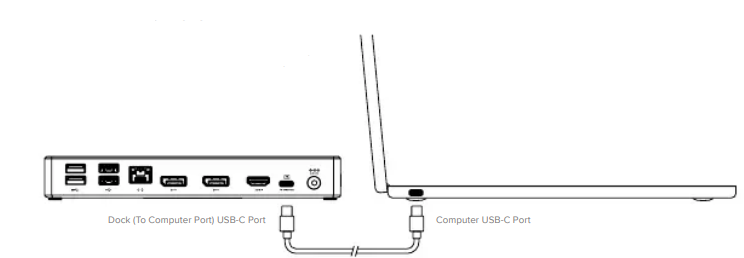
The device is Plug and Play compatible and will be detected and configured by your computer automatically. This process will take a few seconds the first time you plug the device into your laptop, and you may receive a notification that it has been installed and is ready for use. Once the device has been recognised and set up by your computer it is ready for use and you can connect other devices as desired such as monitors, USB devices and a network cable. Your laptop will also start charging with up to 100W of power when connected to the dock.
Not all USB-C ports on Windows computers support video output. Ensure that you connect the device to a port that are video capable. Refer to the USB-C Port Video Support section of this manual for further details. Not every USB-C port on notebook computers supports charging. If your computer doesn’t start charging when a power supply is connected to the device and the device is connected to your computer, try a different USB-C port on your machine or consult the computer’s manual to determine which ports accept power from USB PD power sources.
Connecting Devices to the Dock:
Connect external devices such as monitors, memory card, USB memory sticks, ethernet cable and headphone/mic to the dock, as necessary. The following outlines the available ports and their functions.
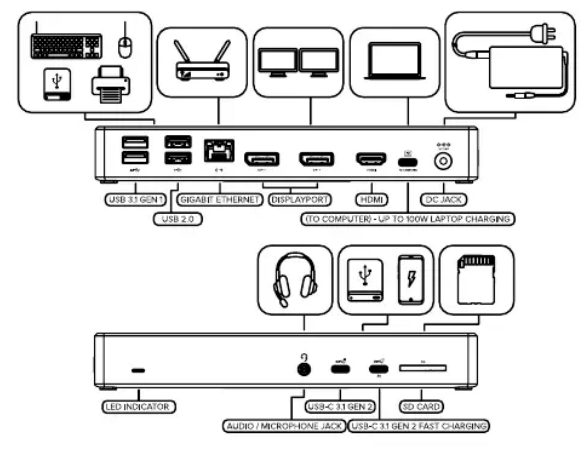
The USB-C ports on the front of the unit supports fast charging of mobile devices. If charging a device, ensure you connect it to this port. Video Output Capabilities: The following section outlines the maximum video output resolution supported by the dock in dierent display configurations. The displayport alt mode version supported by the USB-C port on the laptop (HOST) will determine the number of displays, resolution and refresh rates supported by the dock
Host (Laptop USB-C) Single Display Dual Display Triple Display MST Host (Independent/ Extended) MST Host (Independent/ Extended HBR3 DP1.4 with DSC 5120×2880@60Hz 2*3840×2160@60Hz 3*3840×2160@60Hz (with reduced blanking) HBR3 DP1.4 without DSC 3840×2160@60Hz 2*3840×2160@30Hz 1*3840×2160@30Hz+ 2*1920x1080P@60Hz HBR2 DP1.2 3840×2160@30Hz 2*1920x1080P@60Hz 3*1920x1080P@30Hz
USB-C Port Video Support:
Not all USB-C ports support video output. Many Windows and Chromebook computers have multiple USB-C ports, but only support video output from one or two of them. If using a Windows or Chromebook machine it is important to ensure that you plug the device into a port/ports which supports video output for it to be able to show video on external monitors.
Many USB-C ports that have no labelling support video output, however USB-C ports which have a DisplayPort logo or Intel Thunderbolt logo printed next to them almost certainly support video output and you should look for these icons next to the ports on your computer If in doubt about whether a USB-C port supports video output, consult the user manual for your computer or the support information on the manufacturer’s website. The device can be used with USB-C ports which do not support video output; however you will not be able to connect the HDMI ports to external monitors and show video. The other ports (Ethernet, audio, card readers and USB ports) will be functional.
Troubleshooting
Symptom Solution Video doesn’t show on external display
- Check that the HDMI cable is connected securely between the monitor and device and the device is securely connected to the computer
- Check that the external monitor is turned on and set to the correct input
- Check that your computer is detecting the external display and is set to show video on it
- Check that the USB-C port on the computer that you have connected the device to supports video output using DisplayPort Alternate Mode
- If the computer doesn’t detect the external monitor or output video after checking the above, restart your computer and attempt again Video drops out intermittently
- Check that the HDMI cable is connected securely between the display and device
- Check that the device is securely connected to the computer
- Check that the HDMI cable being used to connect to the display is of good quality and isn’t damaged Computer doesn’t start charging when the device is connected
- Ensure a USB Power Delivery power supply is connected to the USB-C port on the device marked PD
- Ensure that the power supply is connected at the wall and turned on, and the USB-C cable supplying power is securely connected
- Verify that the USB-C port on the computer supports charging from a USB PD power source
REFRENCE LINK

